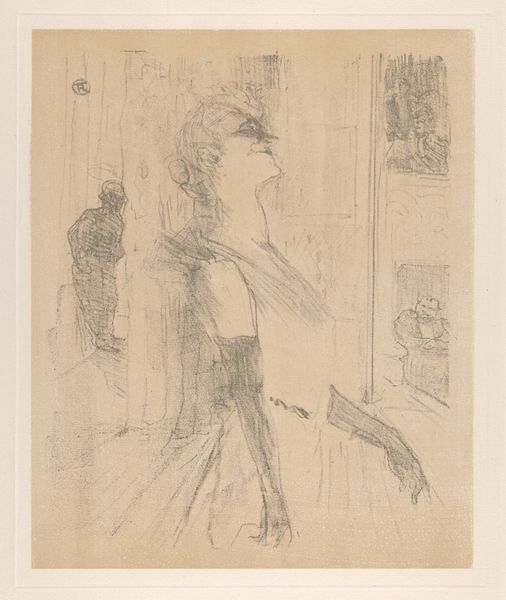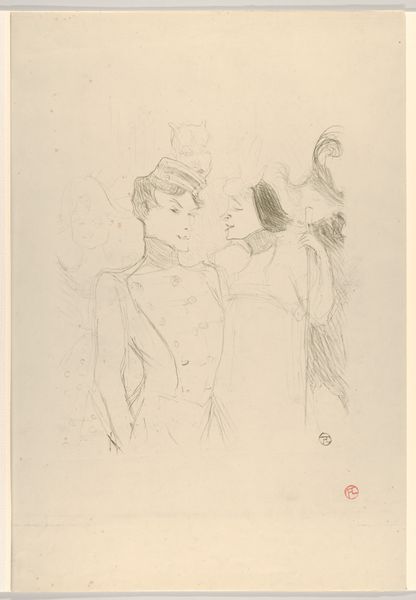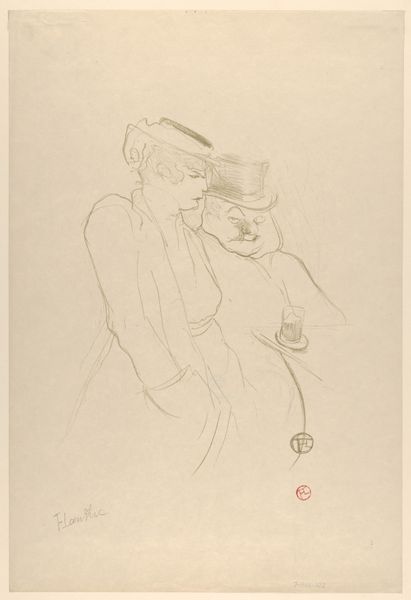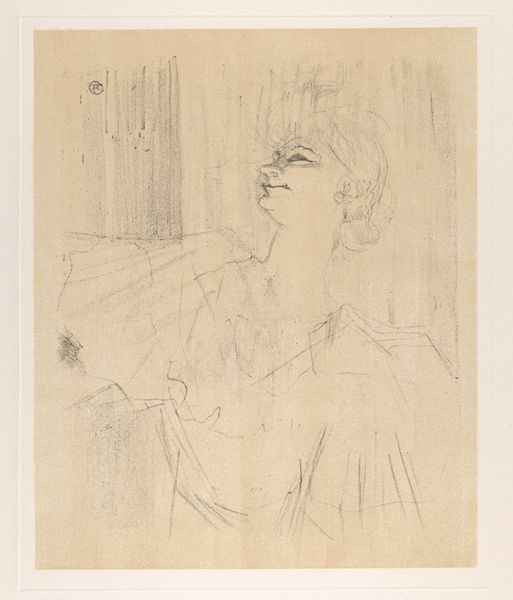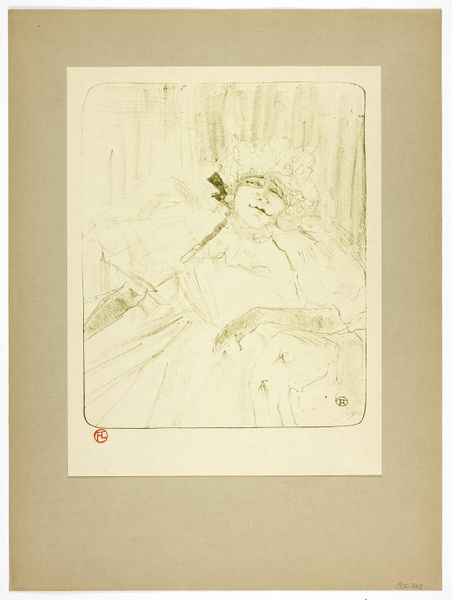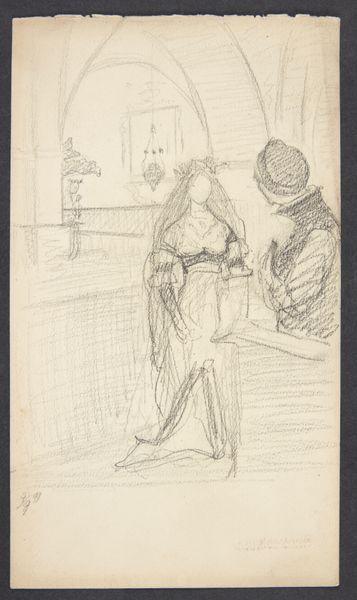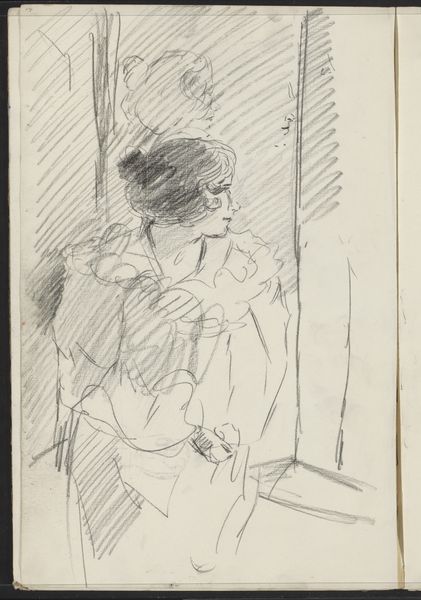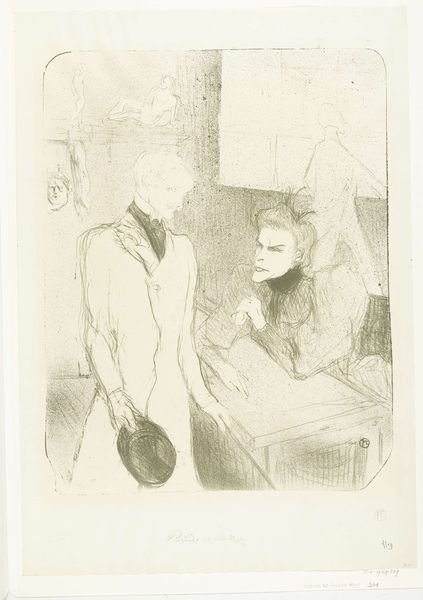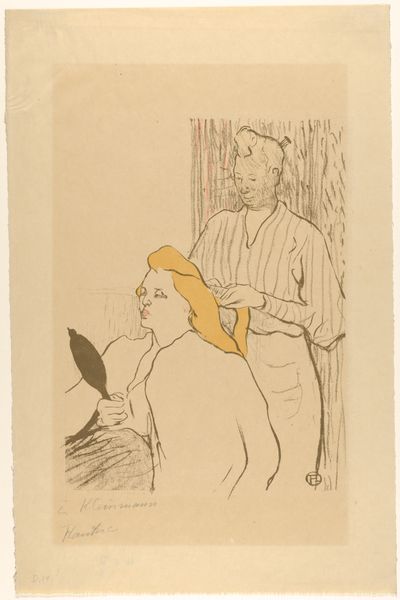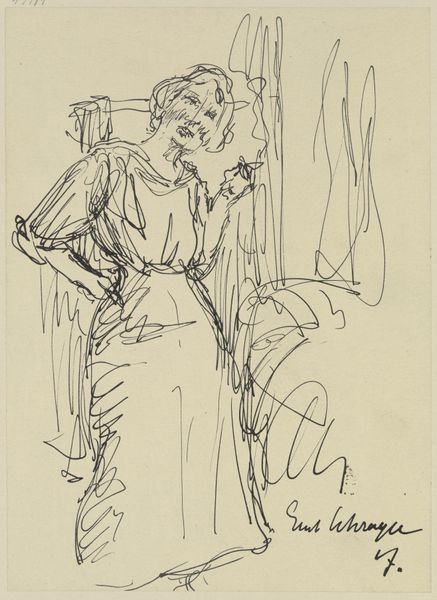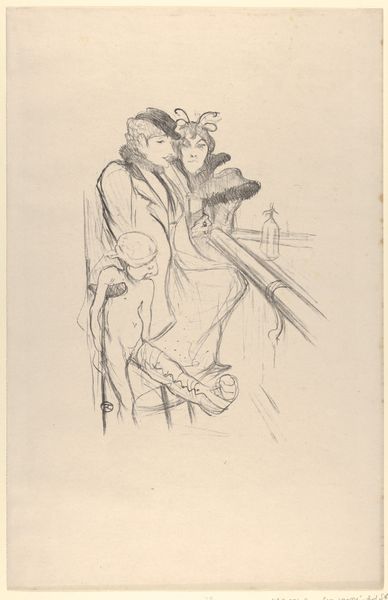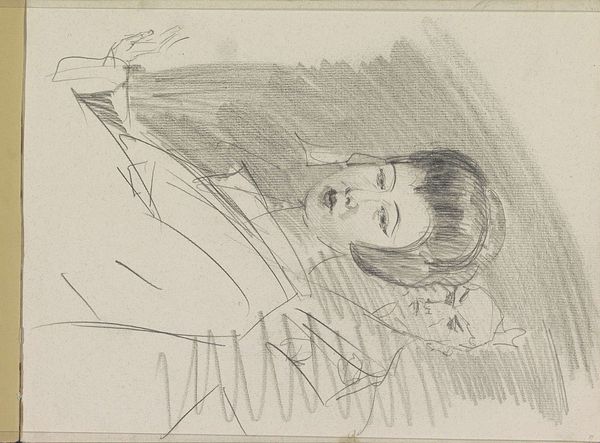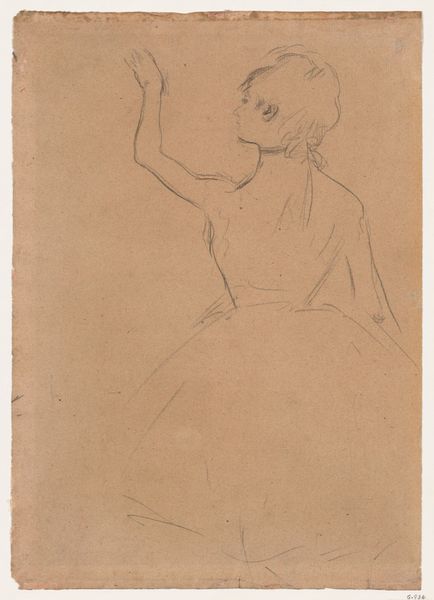
Dimensions: Image: 11 13/16 × 9 15/16 in. (30 × 25.2 cm) Sheet: 18 1/8 × 12 3/16 in. (46 × 31 cm)
Copyright: Public Domain
Henri de Toulouse-Lautrec sketched "La Tige, Moulin Rouge" with black crayon. Here, we are met with an interior scene of the famous cabaret. But it is the woman's black bow that commands our attention, a stark silhouette atop her head. Throughout history, the bow has been an emblem of femininity, often associated with courtship and allure, think of Rococo portraits, where ribbons and bows were used to create a sense of playful elegance. Yet, in this fin-de-siècle setting, the bow takes on a new dimension. It speaks of the complex and often contradictory role of women in modern society, a tension between the expectation of demure respectability and the allure of the demi-monde. Consider, also, how the upward sweep of the bow subtly mirrors a pair of horns, evoking something darker and more visceral. This is not merely decoration; it is a signifier of the intense emotional and psychological undercurrents that pulsed beneath the surface of Parisian nightlife, an echo of ancient Dionysian rites, of the sacred and profane intertwined. The symbol resurfaces, constantly evolving, and reminding us of the cyclical nature of human experience.
Comments
No comments
Be the first to comment and join the conversation on the ultimate creative platform.
